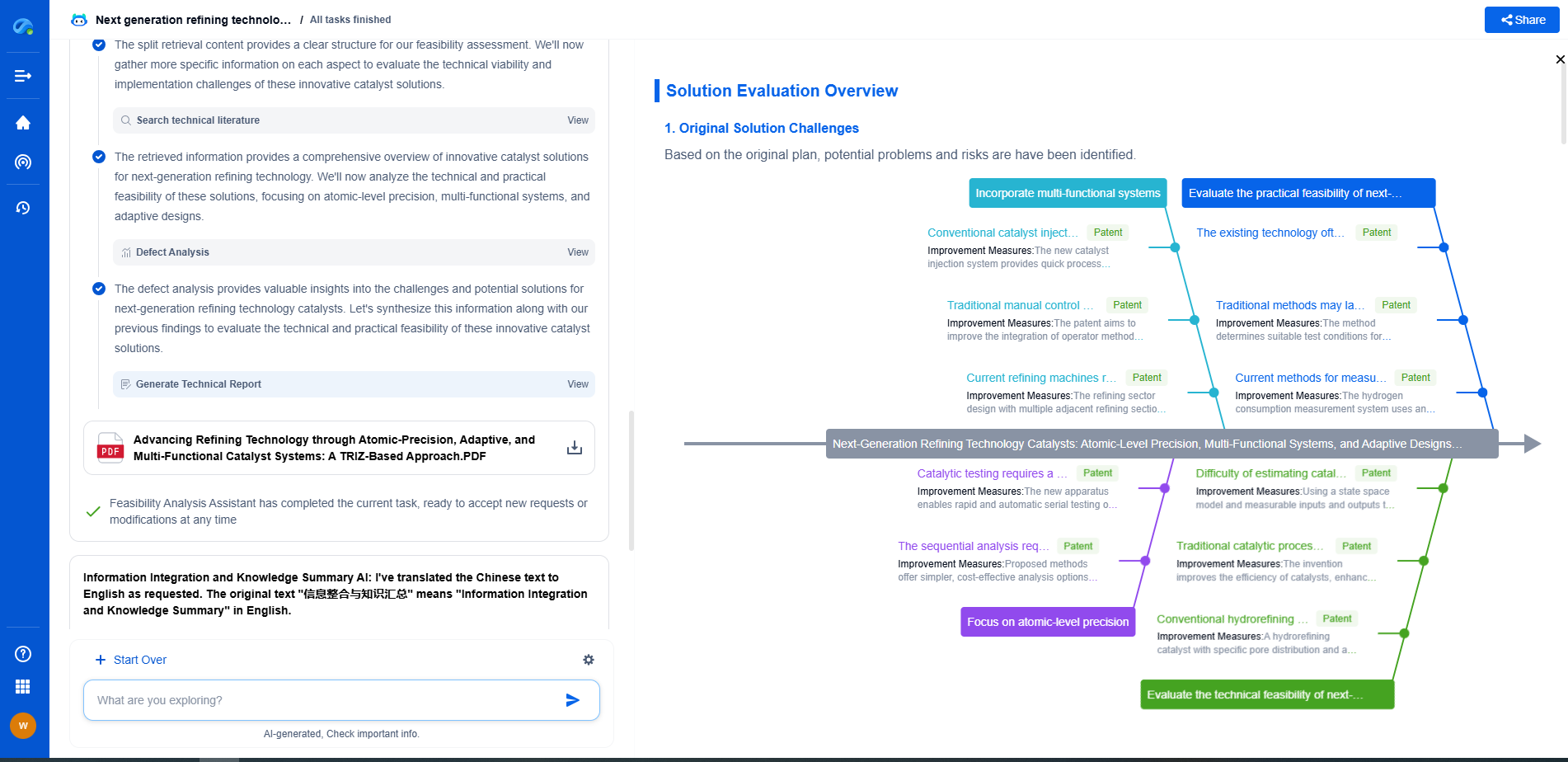What is a monochromator and how does it work in optical spectroscopy?
JUL 15, 2025 |
In the world of optical spectroscopy, a monochromator is an essential device used to isolate specific wavelengths of light. The fundamental purpose of a monochromator is to select a particular wavelength from a beam of light containing multiple wavelengths, allowing scientists and researchers to study specific aspects of light-matter interactions. This is crucial in various applications, including chemical analysis, material characterization, and environmental monitoring. Understanding how a monochromator works and its role in optical spectroscopy can provide valuable insights into its applications and significance.
Components of a Monochromator
A monochromator typically consists of several key components that work together to separate and direct light of a specific wavelength:
1. **Entrance Slit**: The entrance slit is the first component that light encounters as it enters the monochromator. It serves to define the initial beam of light and limits the width of the incoming light, ensuring precise control over the light entering the system.
2. **Dispersive Element**: The dispersive element is the heart of the monochromator and is responsible for separating the incoming light into its constituent wavelengths. This can be achieved using a prism or a diffraction grating. Prisms work by refracting light, causing different wavelengths to bend at different angles, while diffraction gratings disperse light by constructive and destructive interference.
3. **Collimating and Focusing Optics**: These optical components, typically mirrors or lenses, are used to direct and focus the light within the monochromator. The collimating optics ensure that light rays are parallel as they reach the dispersive element, and the focusing optics direct the separated wavelengths towards the exit slit.
4. **Exit Slit**: The exit slit is positioned at the focal plane of the dispersed light, allowing a narrow band of wavelengths to pass through. By adjusting the position of the dispersive element or the exit slit, different wavelengths can be isolated and directed towards a detector or sample.
How a Monochromator Works
The monochromator operates by taking advantage of the dispersive properties of its central element, separating incoming light into a spectrum of its constituent wavelengths. Here's a step-by-step look at how it works:
1. **Light Entry and Collimation**: Light enters the monochromator through the entrance slit and is directed towards the collimating optics, which align the light rays into a parallel beam.
2. **Dispersion**: The parallel beam of light then encounters the dispersive element, such as a prism or diffraction grating. As the light interacts with this element, it is separated into its component wavelengths, each bending or diffracting at a different angle.
3. **Focusing and Selection**: The focusing optics gather the dispersed light and direct it towards the exit slit. By positioning the exit slit at a specific angle or distance, a narrow band of wavelengths can be selected.
4. **Output and Detection**: The selected wavelength exits the monochromator through the exit slit and can be directed towards a detector or sample for further analysis. By rotating the dispersive element or adjusting the exit slit, different wavelengths can be isolated and analyzed in sequence.
Applications of Monochromators in Spectroscopy
Monochromators play a crucial role in various types of spectroscopy, including:
1. **Absorption Spectroscopy**: In absorption spectroscopy, monochromators are used to analyze how a sample absorbs light at different wavelengths. By isolating specific wavelengths, researchers can determine the concentration and identity of substances within a sample.
2. **Emission Spectroscopy**: Emission spectroscopy involves measuring the wavelengths of light emitted by a sample. Monochromators help isolate these emitted wavelengths, enabling the identification of elements or compounds based on their emission spectra.
3. **Fluorescence Spectroscopy**: In fluorescence spectroscopy, monochromators are employed to select the excitation and emission wavelengths. This allows for the study of fluorescent molecules and their interactions within a sample.
4. **Raman Spectroscopy**: Raman spectroscopy utilizes monochromators to analyze vibrational, rotational, and other low-frequency modes in a system. By isolating specific wavelengths, researchers can gain insights into molecular structures and interactions.
Conclusion
Monochromators are indispensable tools in the field of optical spectroscopy, providing the capability to isolate and analyze specific wavelengths of light. Their ability to separate light efficiently and accurately makes them vital in numerous scientific and industrial applications. By understanding the components and functionality of monochromators, researchers can harness the power of optical spectroscopy to unlock new discoveries and advancements across various fields.
From interferometers and spectroradiometers to laser displacement sensors and fiber optic probes, the field of optical measurement is evolving at light speed—driven by innovations in photonics, MEMS integration, and AI-enhanced signal processing.
With Patsnap Eureka, biomedical innovators can navigate cross-domain insights in optics, electronics, and biocompatible materials, while discovering IP trends across academic, clinical, and commercial datasets.
💡 Fuel your next breakthrough in optical health tech—start using Patsnap Eureka to unlock deep insights today.
- R&D
- Intellectual Property
- Life Sciences
- Materials
- Tech Scout
- Unparalleled Data Quality
- Higher Quality Content
- 60% Fewer Hallucinations
Browse by: Latest US Patents, China's latest patents, Technical Efficacy Thesaurus, Application Domain, Technology Topic, Popular Technical Reports.
© 2025 PatSnap. All rights reserved.Legal|Privacy policy|Modern Slavery Act Transparency Statement|Sitemap|About US| Contact US: help@patsnap.com

